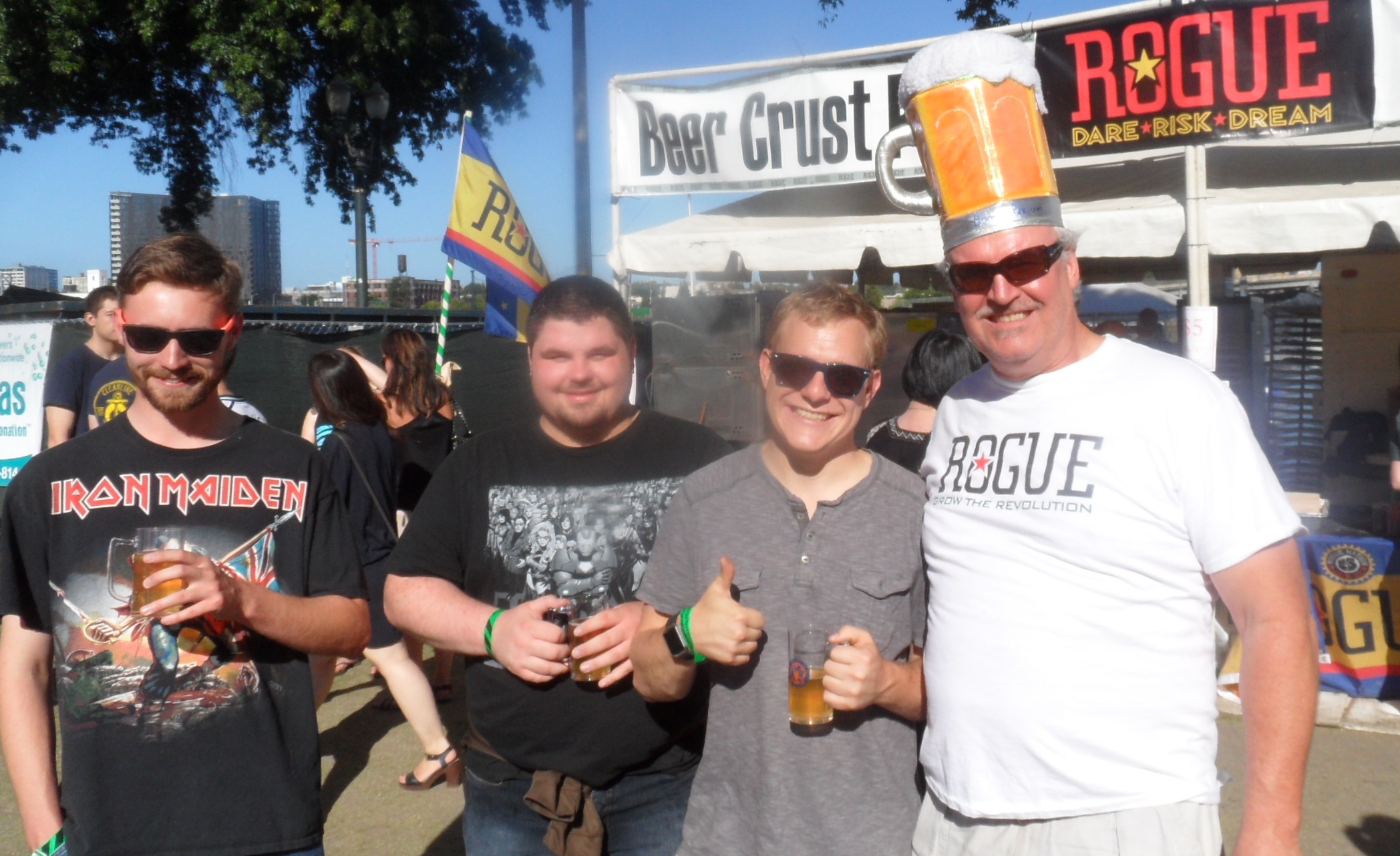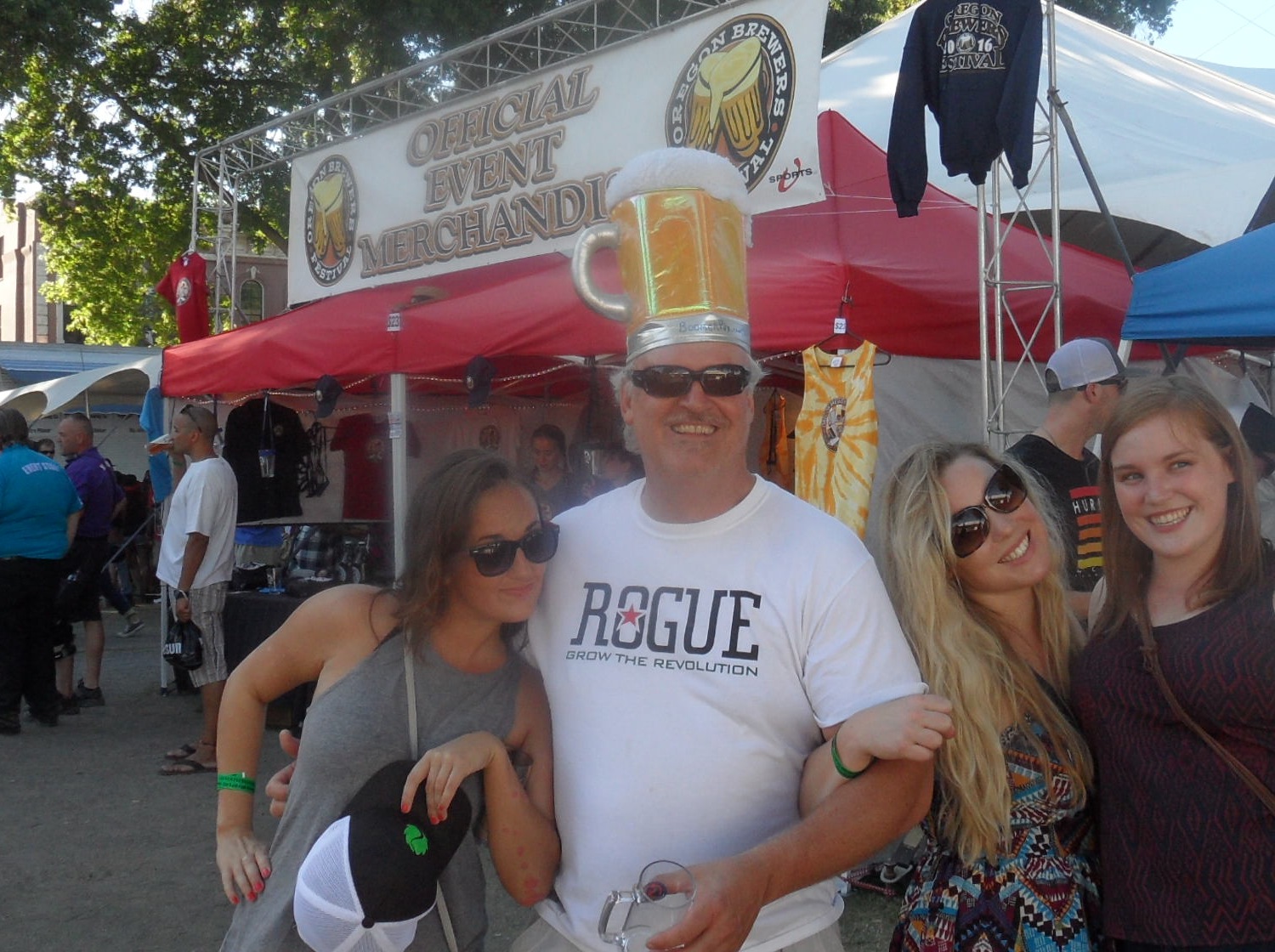
Save great beers. The guys agree.
When Big Beer adds new beer buys, it’s more than beer.
What’s better than a cold one on a hot day?
The next person who says a glass of wine on a hot day is better than beer will be the first.
Beer is the answer. What was the question? Oh, right, the antidote for a steaming hot afternoon?
It’s not room temperature wine, and if you hear someone say that, they’re either lying, or a wino.
Even when America tipped the same suds, beer was king, for better or worse.
Today’s focus on micro-brew, craft brew, and home brew changed the answer to better, not worse.
Blame it on kids forty and under. They want real beer, they make real beer, and we’re better off.
Or are we? Is the Golden Age over?
From Beer And Brewing Magazine:
When BridgePort IPA was released to the public in 1996, a beer with 50 IBUs was considered extreme, and aggressive late-hopping with Cascade and Chinook was avant garde. This beer, which took gold at the 1997 Great American Beer Festival for Classic English Pale Ale, is understated compared to what today’s craft brewers are doing with hops.
When they get it right, today’s craft brewers cook up a balanced beer that works from the first taste to last breath.
Some beer lovers go too far when they say they hope their last breath is a beer exhale, but the idea is the same: new beer buys that cut through the sludge of the familiar.
This beer enthusiast, and bad clock reader, parked on NW Flanders below 13th around two one Saturday afternoon for a beer party called IPA Wars.
The event didn’t start until five, so I looked around, bought a drink at Backpedal Brewing, and left the party for others.
On the way I stopped at Tapphoria, 13815 SW Pacific Hwy #40, Tigard, OR 97223, in case you need a good beer. And I did.
But I got so much more, which is the usual in there. Beer Talk was in session.
Edited for space.
“Big Beer is pulling up small breweries by the roots and shaking them out in the name of business, but it’s bad business.
They’re buying the little guys for the hops futures. You know about hop futures? You should.
Beer and Brew Mag:
Hops thrive in two geographic bands that fall roughly between the 35th and 50th parallels on either side of the equator. The vast majority is grown in the United States and Europe, which collectively account for about 90 percent of worldwide production by weight. And although virtually all American hops come from Washington, Oregon, and Idaho, small farms can be found in many states.
If a beer is consistent it has a better chance to catch on, to sell above the average and avoid failure.
Inconsistent beer is failure in a bottle. You don’t get that many chances with beer drinkers. If they want bad beer the list is endless. Good beer has a short list.
If the biggest obstacle for people interested in farming is buying land to farm, the big hurdle in brewing beer is equipment and space.
And hop futures. If you own futures of beer ingredients, you’ve got a line on good beer. Big Beer knows this.
More from Beer and Brewing Mag:
On the other hand, homebrewers and small startup breweries often purchase hops on what’s known as the spot market. This market is really just whatever remains after the contracted hops have been set aside from that year’s harvest. In the event of a hops shortage, such as the ones of 2007 and 2008, demand for hops on the spot market can boost prices to many times those of a normal year, forcing some craft brewers to reformulate recipes to get by with what’s available.
Further complicating the buying and selling process is that some of the most popular varieties are the exclusive property of the commercial organizations that bred them. These include the following:
- Ahtanum™ (YCR 1 c.v.)
- Amarillo® (VGXP01 c.v.)
- Citra® (HBC 394 c.v.)
- Mosaic® (HBC 369 c.v.)
- Simcoe® (YCR 14 c.v.)
- Warrior® (YCR 5 c.v.)
The private developers of these varieties control production and supply by imposing licensing agreements in which growers and brokers agree to pay royalties for access to these plants. And because these are some of the most sought-after hops in craft brewing today, they are priced accordingly.
If you believe Big Oil buys and stores inventions and patents for alternative energy, you might believe Big Beer buys and stores small breweries with hop contracts for future crops.
If you buy the brewery you own the futures contracts. And if the small brewery fails to deliver the goods in Big Beer’s business plan? Buh bye.
The next thing you see is a new crafty beer from Big Beer on the shelf, and it won’t be that bad.
Varietal grapes make the wine industry; varietal hops do the same in the beer industry.
While the companies scooped up by AB InBev for The High End differ geographically, they have several things in common including being deemed “the leading” or “one of the fastest growing craft brewers” in the country. The brewers also often owned and operated brewpubs — restaurants that serve and brew their own beers.
AB’s Craft Beer Shopping Spree
| Goose Island | March 2011 |
| Blue Point Brewing | Feb. 2014 |
| 10 Barrel Brewing | Nov. 2014 |
| Elysian Brewing | Jan. 2015 |
| Golden Road Brewing | Sept. 2015 |
| Breckenridge Brewing | Dec. 2015 |
| Four Peaks Brewing | Dec. 2015 |
| Devil’s Backbone Brewing | April 2016 |
Reading between the lines is important to beer fans, though after one too many the lines might blur.
If craft beer suffers anything, it’s the five dollar 12 oz. snifter and the beer guy gives you five ones change for the ten you forked over. So you can tip. Now it’s a six dollar short beer.
At the end of the day will beer snob go for the gusto, or will he skip craft beer altogether and throw another dollar for a six pack of pounder PBR?
AB-Inbev gives us a clue with their brand strategy:
Focus Brands are those in which we invest most of our marketing money, and to which we dedicate the greatest proportion of our share of mind. With a portfolio of well over 200 brands, we are prioritizing a small group with greater growth potential within each relevant consumer segment. These Focus Brands, include our three global brands, international brands, and ‘local champions’.
Brand Portfolio

Global Brands
Budweiser, Corona and Stella Artois.

International Brands
Beck’s, Hoegaarden and Leffe.

Local Champions
With hops contracts and water deals in the future, we have lots to look forward to.
Is it time for a beer yet? Time for new beer buys?

If great beer fades away, the ladies will come after you.


